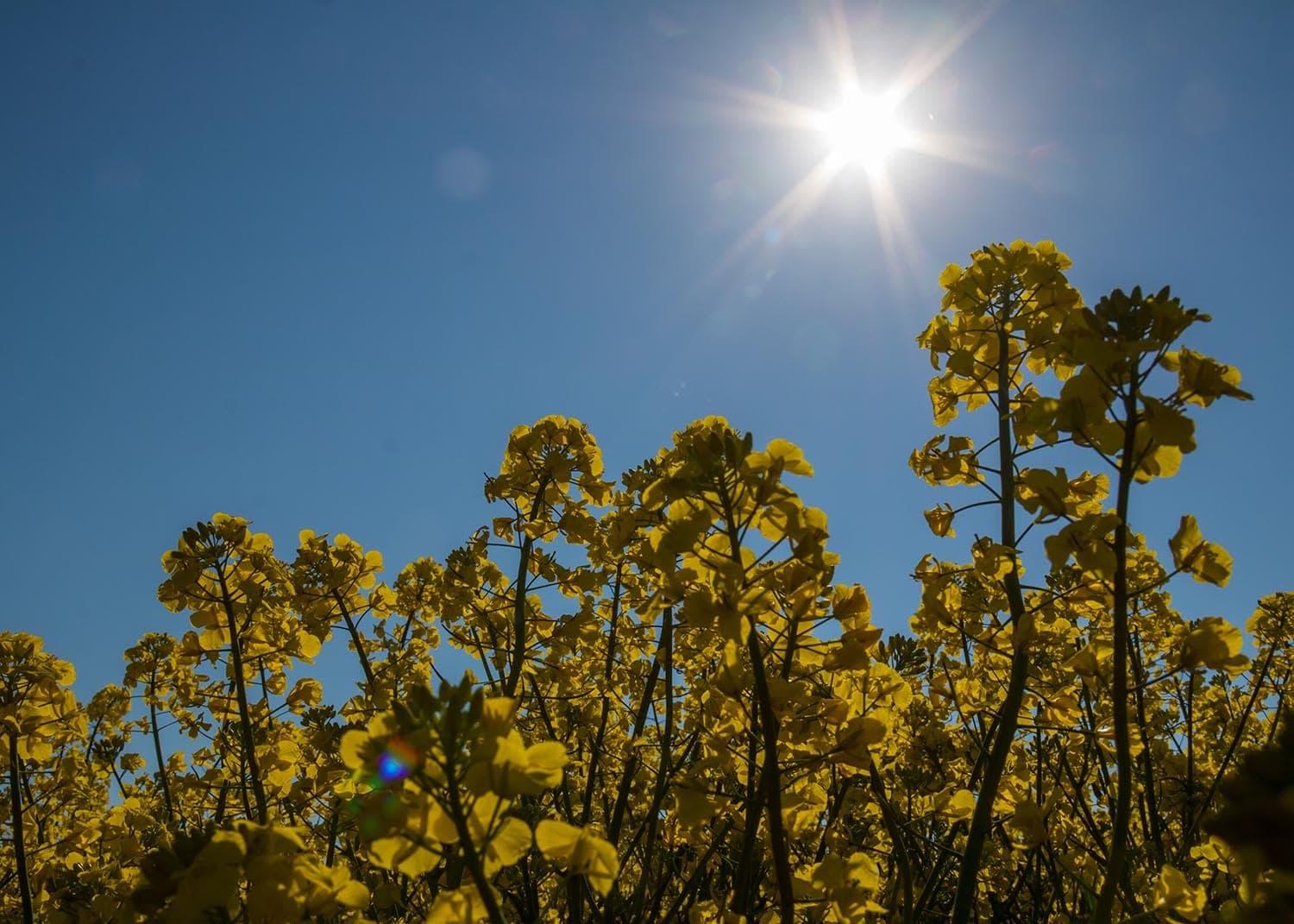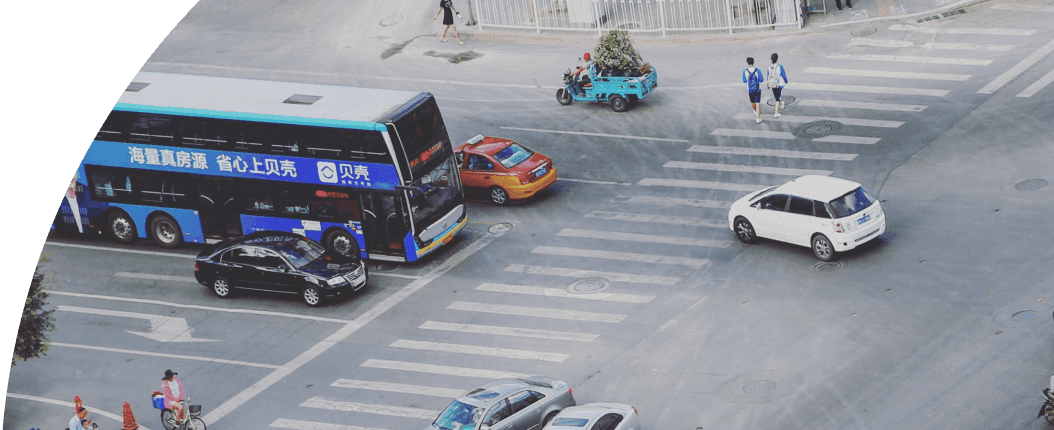
News
By Jamie Zouras, Joseph Mendonca, June 20, 2024
Co-authored by Joseph Mendonca
Millions of people across the U.S. now experience extreme heat every year—facing threats to their health, well-being, and financial security. As climate change is only making extreme heat even worse, inaction cannot be an option and communities must work together to mitigate its effects. Through strategic land use and by using a smart growth approach, the built environment can help alleviate the burden of extreme heat, especially in historically disinvested communities dealing with its worst effects.

What is extreme heat? The National Weather Service uses the heat index (which considers both temperature and humidity) to issue alerts when outside conditions can be harmful to human health. Depending on location, alert procedures begin at around 105°-110°F, although heat-related illnesses can even occur before that.
An extreme heat event, as defined by FEMA, is a period in which temperatures are “excessively hot” compared to the norm for that region and time of year. The body normally cools itself down through sweating, releasing its excess heat into the surrounding air as sweat evaporates. But when temperatures exceed the body’s ability to cool itself, or if the air is humid enough to prevent sweat from evaporating fast enough, normal body processes and organ functioning can be affected. This manifests as heat-related illnesses, like heat exhaustion and heat stroke, which, if not addressed immediately, can be fatal. Those most vulnerable to heat-related illnesses (the elderly, children, and those with pre-existing conditions) and those most exposed to outdoor conditions (outdoor workers, pedestrians and bicyclists, the unhoused, and those without consistent access to AC) are especially impacted.
How climate change drives extreme heat events
Extreme heat events already cause more fatalities than hurricanes, floods, and tornadoes combined. And the trends are clear: every year in the past decade ranks in the top ten hottest years on record, including 2023, where every single month from June through December broke records for high temperatures. From Phoenix to New York to Portland to Miami, extreme heat, largely driven by climate change, is endangering lives, straining resources, and damaging critical infrastructure. With climate change-fueled extreme heat already impacting communities across the U.S., residents, planners, and community leaders must urgently prepare for the impacts of extreme heat events that are more common, more severe, and more deadly.
ATL Rising: Building resilience in the face of extreme heat
Over the past year, SGA has partnered with the Partnership for Southern Equity (PSE) to learn from community members, advocates, policy leaders, and researchers in Atlanta, Georgia about their experiences with extreme heat and how they want to see it addressed. We interviewed residents and compiled their testimonies to raise awareness on how communities can better prepare for and stay safe during extreme heat events and to help inform policy and advocacy efforts in the region. Watch the video and learn more here.
How conventional zoning and discriminatory land use policies amplify extreme heat inequities
The majority of built development in the U.S. is dictated by a regulatory framework of local zoning ordinances, master plans, and neighborhood plans which have often not been comprehensively updated in decades. These outdated systems prioritize separated land uses, large lot single-family development, and auto-oriented development, contributing to the nation’s severe lack of safe, stable, affordable housing and infrastructure. This conventional approach to land use also amplifies the effects of climate change and extreme heat by promoting sprawling development that requires drivers to take more and longer trips and leads to increased vehicle emissions, pavement and concrete production, impervious surface runoff, and other negative externalities.
Conventional zoning and discriminatory land use regulations of the past—including Euclidean zoning, redlining, urban renewal, and restrictive lending—have created and reinforced patterns of inequality. By imposing restrictions on the types of housing and the density of development, zoning has played a significant role in perpetuating segregation and racism, maintaining wealth and income disparities, and limiting minority communities’ access to resources and climate-resilient infrastructure. Systems of oppression across the country have also led to chronic disinvestment in communities of color; parks, street trees, and other green infrastructure in these areas were often dismantled and allowed to fall into disrepair. These green spaces would normally absorb sunlight and heat, provide shade, and release water vapor into their surroundings, cooling down ambient temperatures. But when paved over with asphalt or removed for construction, none of these benefits reach the communities most impacted. And because asphalt and concrete absorb and reradiate more sunlight and heat, they can form a heat island where temperatures are increased by over 8°F.
These same under-resourced communities, again due to systemic disinvestment, are more likely to have older buildings and housing stock. This means that energy-inefficient infrastructure, like inadequate insulation, outdated cooling systems, and poor ventilation, forces households to devote much of their income to paying their electricity bills. This energy burden already affects these households, but when temperatures rise, households respond by using their A.C. more to remain safe and comfortable in their own homes. That means that when an extreme heat event occurs, some of these households face impossible choices with dire consequences—including, sometimes, losing access to electricity entirely.
How health is impacted by extreme heat
While extreme heat is the U.S.’s most deadly weather event, its impacts are not as visible as other natural hazards like hurricanes or floods, which means that people are sometimes not aware of the danger until it’s too late. Called the “silent killer,” extreme heat can cause illnesses like heat stroke, heat exhaustion, and heat cramps when people are overexposed to high temperatures.
Although extreme heat poses a danger to many Americans, it’s especially harmful for older folks, children, outdoor workers, the unhoused, and those with pre-existing conditions like heart disease or asthma. In many places, that means that Black, Brown, and low-income communities are bearing the brunt of the impacts of extreme heat. Across the country, communities of color, often in the aforementioned redlined areas, are 8% more likely to live in areas where extreme temperature-related deaths will dramatically increase due to climate change; areas where Black communities reside are 40% more likely to see drastically more extreme temperature-related deaths.
How to approach extreme heat with smart growth
Extreme heat is affecting more people than ever, and the built environment must help alleviate the danger it poses. Local governments should lean on land use regulation like reformed zoning codes to boost climate resilience, helping protect communities from extreme heat. Reformed zoning supports the creation of diverse housing types, increased affordable housing, and infill development that can encourage more walkable and transit-oriented communities. This dense, mixed-use development reduces the need for car travel and minimizes exposure to heat-trapping surfaces and automobile-related air pollution. Implementing zoning solutions like form-based codes, eliminating parking minimums that create asphalted, heat-amplifying parking lots, and strategically reducing setbacks and density restrictions so that buildings can provide shade also help mitigate the effects of extreme heat. And because land use regulation and zoning that centers more housing production in less car-dependent places reduces overall carbon emissions (which contribute to extreme heat), it is one of the best ways that local and state governments can take action today.
With support from programs that promote heat mitigation efforts, often facilitated by governments and utility companies, households, too, can take steps to help mitigate the effects that extreme heat can have on both their health and their financial situation. Several measures to make homes more equipped for extreme heat include leveraging weatherization assistance programs, offering rebates to install cooling systems, and ensuring building codes are updated to include requirements for heat-resilient design and construction, while offering financial assistance programs to do so. But these programs must be maintained, expanded, and, if they don’t yet exist, created. Initiatives like directives at the federal level, grants disbursed to communities, and appointments of Chief Heat Officers at the local level help build institutional capacity to better respond to this environmental hazard.
Nature-based solutions, like street trees, green roofs, parks, and other green spaces are an important part of helping cool down the local built environment—and boosting climate resilience in other ways too. Changes to physical infrastructure, like using lighter-colored and solar-reflective paints, integrating cool pavements, and installing shading structures at bus stops and train stations can also provide cooling benefits. Governments and other organizations can establish cooling centers, misters, and splash parks to provide residents refuge from the heat. Some of these strategies will be covered in further detail in future blog posts.
Regardless of the form that extreme heat mitigation takes in the built environment, efforts must center the experiences of those who are affected by it, especially those from communities impacted by discriminatory land use policies of the past. By utilizing the knowledge of these community members, policymakers can help ensure that mitigation is both effective and equitable. Comprehensive, community-driven efforts are what’s needed to help support healthy, prosperous, and resilient communities.
Related News

© 2025 Smart Growth America. All rights reserved
Site By3Lane Marketing
















